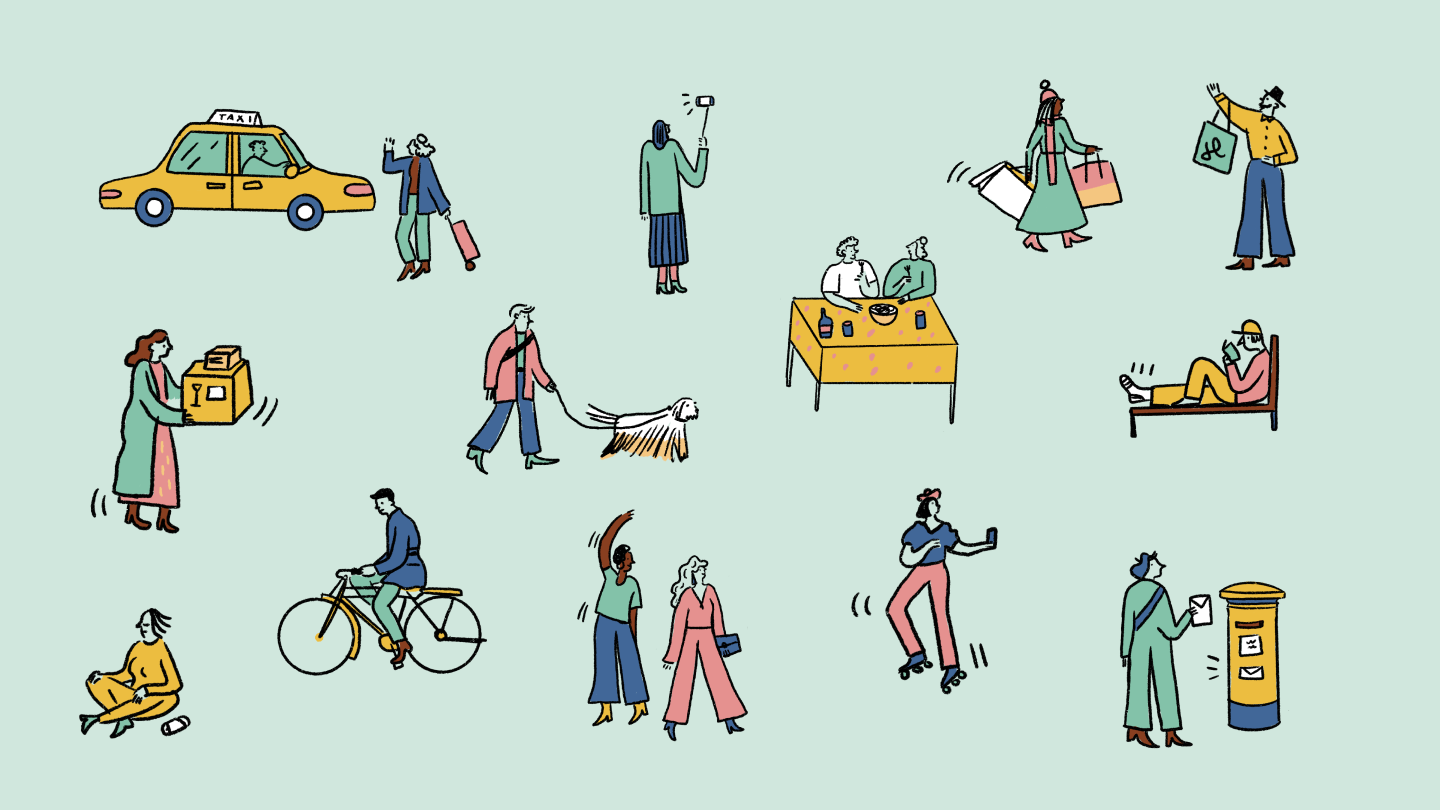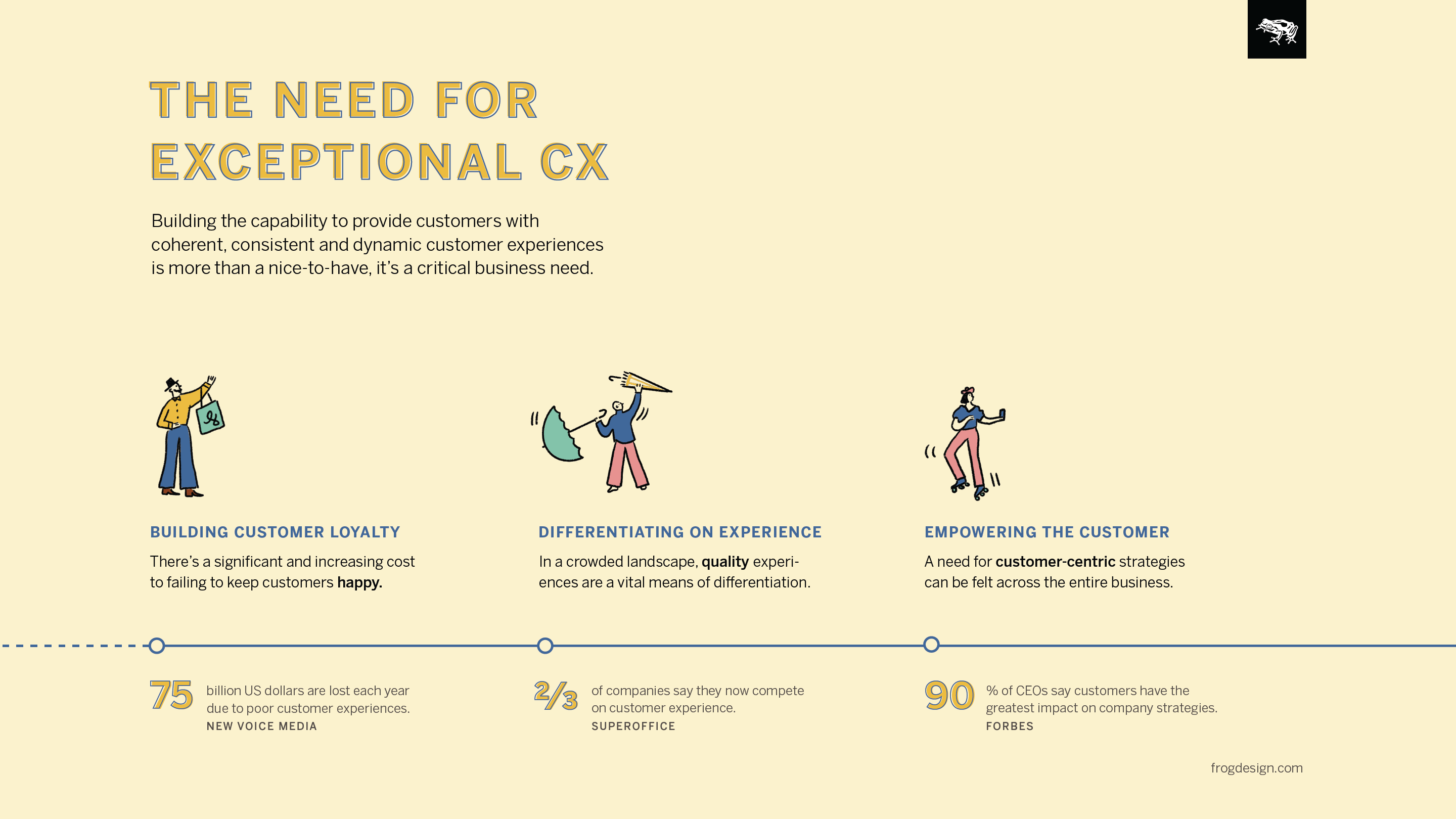
United Around CX: Measuring and Communicating Impact
Great customer experience (CX) has become the main—and in some cases, the only—driver of differentiation. According to Forbes, 89 percent of companies say CX is the basis for competition within their industry.
Yet it’s one thing to say great experiences matter and another thing entirely to demonstrate precisely where and how this focus manifests as customer experience programs. Because superior CX leads to more satisfied, engaged and loyal customers, all organizations should be united around the need to design and implement successful CX-focused initiatives. Too often, however, the difficulties found in demonstrating evidence of tangible business impact from these efforts can make for skepticism that becomes a significant roadblock to progress.
Only by translating the potential benefits of customer experience design into explicit outcomes does it become clear how superior experiences can be a key business value driver, and only then is it possible to get the buy-in (and budget) needed within organizations to ultimately unleash its full financial impact.

Through demonstrating results, such as pointing to metrics that show how customer experience drives growth and improves customer loyalty, it’s possible to change perspectives from seeing CX initiatives as “leaps of faith” to directly connecting these efforts to evidence of competitive advantage.
Customer experience in action: BT
In any business, the definition of what is considered quality CX will only evolve over time. For example, over-the top media services (OTT) have transformed how we consume video content. Years ago, most customers would have been delighted with the prospect of a multi-screen viewing experience, one that made it possible to begin watching something on one device and pick up precisely where they left off on another. Now, this is considered the baseline. Consumers have evolved to expect this feature, and any service that cannot offer it is seen as outdated. Once a standard for experience is raised, any business that wants to stay competitive will soon see there’s no turning back—it’s time to adapt and up the ante on quality.
Thankfully, there are clear connections between CX initiatives and business impact both short- and long-term. For example, when frog partnered with BT to redesign their complete ecosystem of BT TV products, the team was committed to offering a digital-first experience that was just as intuitive as traditional TV offerings. Following the launch of the redesigned service, measures of customer satisfaction improved dramatically. Net Promoter Score (NPS), a key customer loyalty metric, improved by seven points. BT also experienced an 11 percent drop in dissatisfied customers and a seven percent drop in customers likely to leave BT TV. Not only did BT win awards for the experience-driven design strategy, they made measurable progress toward building sustainable customer loyalty in the process.
Success will not be measured the same way for a transaction-based company as a subscription-based one. The strategies for improving experience as a telecom operator (e.g., long-term customer retention) will be different than that of a retailer (e.g., more frequent purchases). Still, each improvement will have an impact. As the expert of your own business, you already have a sense of metrics matter most to you. By tying this knowledge to how customer experience manifests in your business, it is possible to more directly measure the impact of improving CX.
How do you measure success already? Is it by creating more customers? Encouraging more frequent or varied purchases? Reducing costs? Revenue growth? The ability to expand into new markets? To launch new services? This will vary from business to business. However, across all industries, customer experience can be correlated with these tangible effects.
It costs five times more to attract a new customer than to retain one, so keeping customers happy is a vital strategy for lasting business success. Retention rate is a critical driver of profitability, making a huge impact on the customer lifecycle value.
At a time when social media has shifted the power from companies to consumers, building a base of loyal customers is a key path to creating advocates on your behalf. Establishing this advocacy has all sorts of benefits, from expanding your customer base to saving costs through word-of-mouth marketing. In the upcoming report The Business Value of CX, we go deep into the value created through advocacy over time.
To leverage the long-term value creation opportunities that superior CX can provide, its impact should not only be assessed once. It should be carefully tracked as it evolves over time. This would make it possible to then check if such efforts are maintaining the intended result, or if it is necessary to focus on a new aspect of experience differentiation.
Measuring the business value of CX
What steps are you taking to deliver exceptional CX? What business impact can you expect? How will you unify your teams to pursue better experiences that lead to increased customer loyalty and sustainable business value? These are all questions to consider in order to drive growth, build loyalty and stand out ahead of the competition.
To manage expectations of CX results, read about how to understand what quality CX looks like specifically for your business in Your Business, Your CX: Defining Quality.
For more information on measuring results, sign up to get Business Value of CX , a new, free report that includes the four key effects of exceptional customer experience, as well as more detail on frog’s approach to customer-centered innovation.


Nieves Padilla is a Senior Strategist at frog Madrid. Combining an innovative mindset and a practical approach to make data-driven decisions, she is able to conceptualize complex business challenges in order to drive change in organizations. She brings more than 8 years of experience in strategy consulting engagements involving customer experience transformation, organizational transformation and corporate and portfolio strategy for worldwide companies within industries such as financial services, transport, services or tourism & entertainment.

Octavio Egea is a Vice President and Head of Innovation, Strategy & Design at frog. For 20+ years, Octavio has been helping organizations decipher, navigate and thrive in complex industry contexts, deploy new growth platforms and embrace innovation to drive superior alpha. He leads a team of passionate strategists, designers and technologists assisting startups and global corporations in identifying emerging opportunities, developing growth strategies, building new businesses and creating innovative and meaningful experiences that resonate with customers and employees.
We respect your privacy
We use Cookies to improve your experience on our website. They help us to improve site performance, present you relevant advertising and enable you to share content in social media. You may accept all Cookies, or choose to manage them individually. You can change your settings at any time by clicking Cookie Settings available in the footer of every page. For more information related to the Cookies, please visit our Cookie Policy.